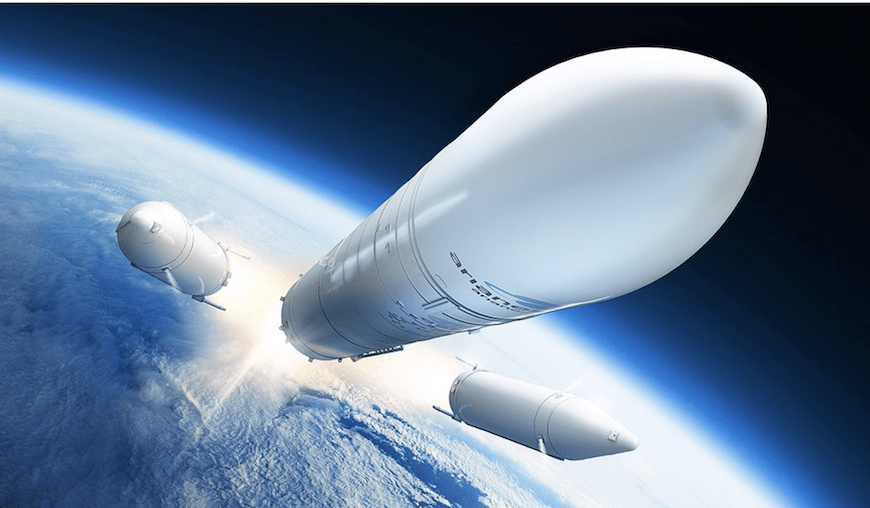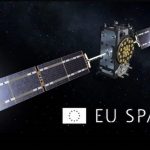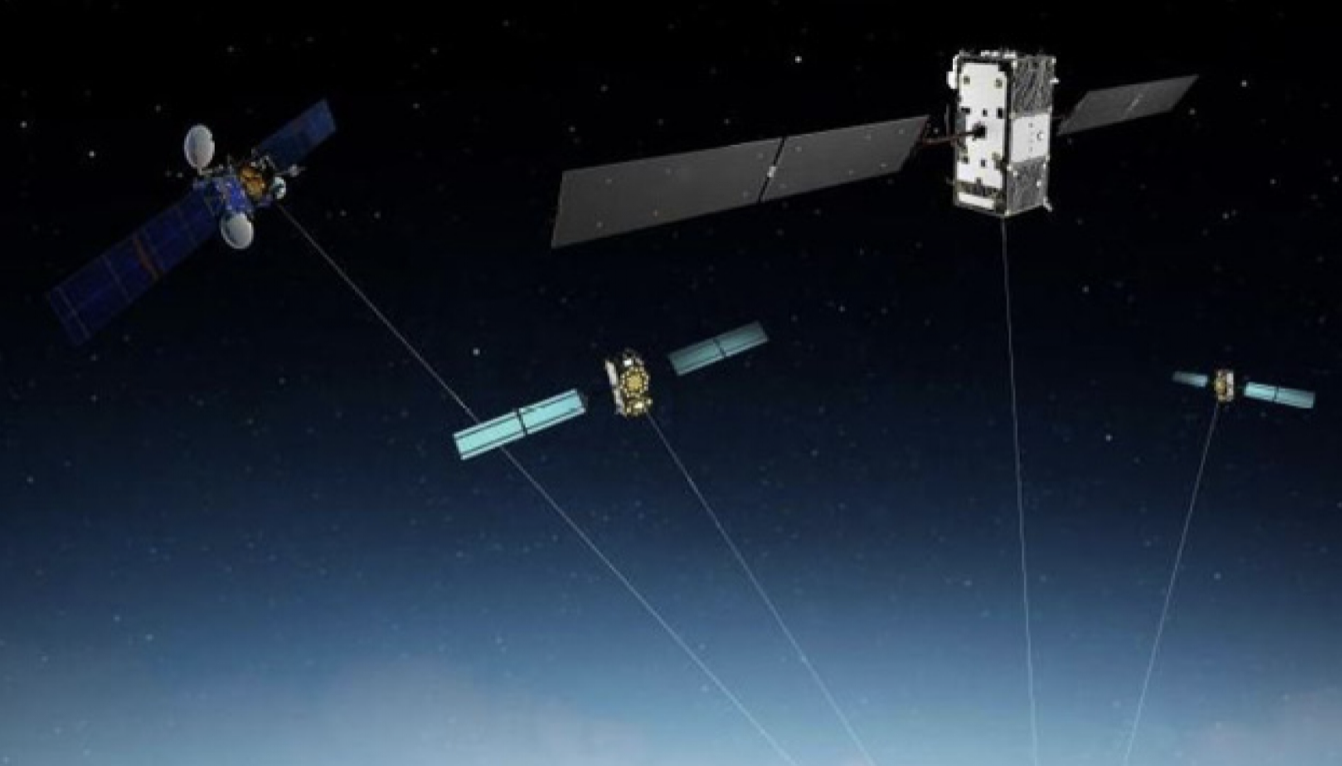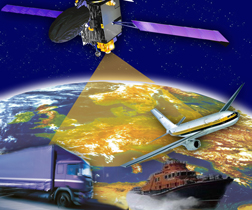The European Space Agency (ESA) has preordered four additional Galileo launches on the new Ariane 6 rocket from Arianespace. Starting in January 2022, the launches will orbit eight satellites from Batch 3 to support the final deployment of the Galileo constellation and the replacement of certain satellites.
The Galileo space segment currently includes 26 satellites. The first 14 satellites in the constellation were launched two at a time using the Soyuz launcher from the Guiana Space Center. An additional 12 satellites have now been orbited on three Ariane 5 ES missions, each rocket lifting four, in November 2016, December 2017 and July 2018. These Batch 1 and Batch 2 satellites will soon establish Galileo Full Operational Capability.
[Image above Ariane 6 rocket. Artist’s rendering courtesy Arianespace.]
In 2017, ESA chose Arianespace to launch the first four satellites in Galileo Batch 3. These will rise two at a time aboard an Ariane 62, the lighter version equipped with two side-boosters. The launches from Europe’s Guiana Space Centre in French Guiana are scheduled for late 2020 and mid-2021.
ArianeGroup, formerly Airbus Safran Launchers, is building the Ariane 6, with ESA overseeing the rocket’s procurement and architecture. The Ariane 6 will perform its first demonstration flight in July 2020.
The current order fills the bill for the third round of Galileo satellite launches. ESA’s contract includes the ability to fall back on a Russian Soyuz rocket, also rising from the Guiana Space Centre, if Ariane 6 is not ready. The Ariane 6 and Vega C rockets will succeed Arianespace’s existing launch family of the Ariane 5, Soyuz and Vega, assuring European access to space with vehicles that can compete with SpaceX and other rising launch competitors.
“With Galileo, space is fully integrated into the European economy and society, and makes our space sector globally competitive,” said Jan Wörner, ESA General Director. “And with Ariane 6, we guarantee European autonomy in accessing and using space.”
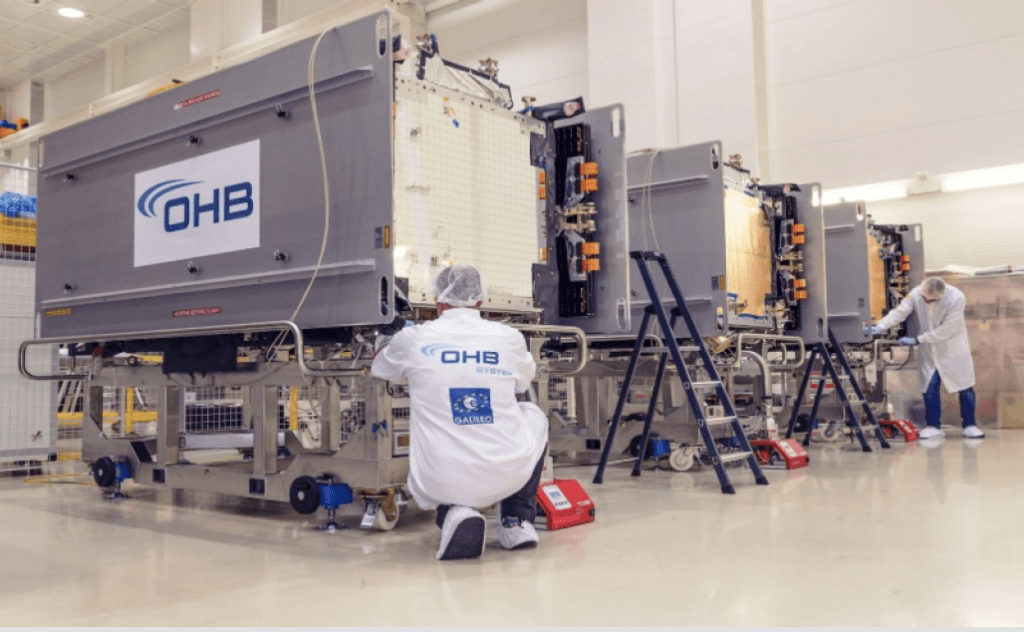
The 12 Batch 3 satellites are currently under production contract with OHB/SSTL. Following them will come Galileo’s Second Generation, new satellites with new capabilities, envisioned to take over in the 2025-2030 time frame. These bringing incremental introduction of new system features and services towards G2G:
- Open Service capabilities (power consumption, convergence)
- High Accuracy evolution (integrity, availability)
- PRS robustness
- Transmit power
- System and SIS in-orbit flexibility / reconfiguration / time-to-market
- Interoperability with non-GNSS, e.g. 5G
- Inter-Satellite Links (ranging, mission dissemination, command & control)
- SAR 2ndGen Beacons
- Security resilience
- Reduce operations / maintenance cost
- Ground technology modernization
- Accelerating time-to-market of Galileo-enabled products and services

